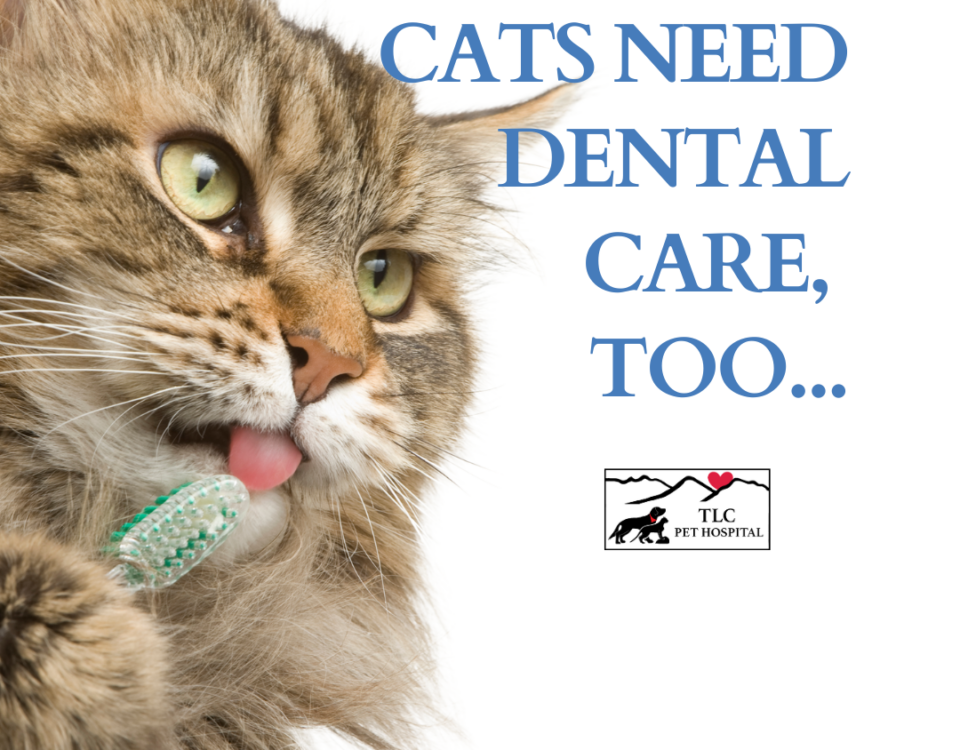4th of July Pets!
July 2, 2012How To Know If Your Pet Is Ill
July 23, 2012Hyperthyroidism in Cats
What is hyperthyroidism?
Hyperthyroidism is a very common disease afflicting primarily middle-aged and older cats. Also called thyrotoxicosis, hyperthyroidism is caused by an increase in production of thyroid hormones (known as T3 and T4) from enlarged thyroid glands in the cat’s neck. In most cases, enlargement of thyroid glands is caused by a tumor called an adenoma, which is non-cancerous. Some rare cases of hyperthyroid disease are caused by malignant tumors known as thyroid adenocarcinomas.
Thyroid hormones affect nearly all the organs in the body; therefore, thyroid disease can sometimes cause secondary problems. Thyroid hormones stimulate a faster heart rate and a stronger contraction of the heart muscle. Over time, cats with hyperthyroidism may develop an enlargement and thickening of the left ventricle of the heart. If left untreated and unmanaged, these changes will eventually compromise the normal function of the heart and can even result in heart failure. This means that in some cats with hyperthyroidism, additional treatment may be required to control secondary heart disease. However, once the underlying hyperthyroidism has been controlled, the cardiac changes will often improve or may even resolve completely.
Hypertension-high blood pressure-is another potential complication of hyperthyroidism and can cause additional damage to several organs, including the eyes, kidneys, heart, and brain. If hypertension is diagnosed along with hyperthyroidism, drugs may be needed to control the blood pressure and reduce the risk of damaging other organs. As in the case of heart disease, after the hyperthyroidism has been successfully treated, the high blood pressure will often resolve, and permanent treatment for it may not be required.
What are the signs of hyperthyroidism?
Cats afflicted with hyperthyroidism usually develop a variety of signs, which may be subtle at first but then become more severe as the disease progresses. The most common clinical signs of hyperthyroidism are weight loss, increased appetite, and increased thirst and urination. Hyperthyroidism may also cause vomiting, diarrhea, and hyperactivity. The coat may appear matted or greasy.
How is hyperthyroidism diagnosed?
Your veterinarian will conduct a physical examination. Your cat’s neck area will be palpated to check for enlarged glands. Your cat’s heart rate and blood pressure may also be checked. If thyroid disease is suspected, your veterinarian will likely order a blood-chemistry panel as well as a thyroid-hormone level. Most cats with hyperthyroidism will have elevated levels of the thyroid hormone T4 in their bloodstream. A small percentage of cats with hyperthyroidism, however, will have T4 levels within the normal range. If that is the case, but hyperthyroidism is still strongly suspected, your veterinarian may recommend additional tests to help confirm the diagnosis.
Because hyperthyroidism can predispose a cat to other conditions, it is important to evaluate general health, with particular focus on the heart and kidneys. The blood-chemistry panel and urinalysis will help reveal information about other organs and provide your veterinarian with an overall picture of your cat’s health.
How is hyperthyroidism treated?
There are three options when considering a cat’s treatment for hyperthyroidism: medication, surgery, or radioactive-iodine therapy. Each has its advantages and disadvantages. Generally, the treatment a cat receives for hyperthyroidism will depend on specific circumstances, including heart and kidney function. Concern about kidney failure is a major determinant of the course of treatment, and may eliminate some of the options.
Medication
Anti-thyroid drugs act by reducing the production and release of thyroid hormone from the thyroid gland. These medications do not provide a cure for the disease, but they do allow either short-term or long-term control of hyperthyroidism. The advantages of medication are that the drugs are readily available and relatively inexpensive. Some cats may experience side effects, however, that include vomiting, anorexia, fever, anemia, and lethargy. Lifelong treatment, usually involving twice-daily oral dosage, will be required-and for some owners and cats, that dosage schedule may be difficult to achieve. For more information on giving pills to your cat, see www.felinevideos.vet.cornell.edu. Routine blood tests should be done periodically during treatment, to evaluate the effectiveness of therapy, to monitor kidney function, and to look for actual or potential side effects.
Surgical Treatment
Removal of the thyroid glands-surgical thyroidectomy- is a relatively straightforward surgical procedure that has a good success rate. The advantage of surgery is that it is likely to produce a longterm or permanent cure in most cats, and therefore eliminates the need for long-term medication. This surgery requires general anesthesia, and there might be added risks if older cats have heart, kidney, or other problems that could cause complications. There is a major risk, associated with the surgical procedure itself, of causing inadvertent damage to the parathyroid glands, which lie close to or within the thyroid glands and are crucial in maintaining stable blood-calcium levels.
Radioactive-Iodine Therapy
When it is available, radioactive-iodine therapy is quickly becoming the treatment of choice for cats with hyperthyroidism. During treatment, radioactive iodine is administered as an injection and is quickly absorbed into the bloodstream. The iodine is taken up by the thyroid gland but not by other body tissues. The quantity of radiation destroys the abnormal thyroid tissue but does not damage the surrounding tissues or the parathyroid glands. The majority of cats have normal hormone levels within one to two weeks of treatment.
The advantages of radioactive-iodine therapy are that the procedure is curative, has no serious side effects, and does not require anesthesia. It does, however, involve the handling and injection of a radioactive substance that is only permitted at facilities specially licensed to use radioisotopes. The radioactivity carries no significant risk for the cat, but precautionary protective measures are required for people who come into close contact with the cat. A treated cat has to remain hospitalized until the radiation level has fallen to within acceptable limits. Usually this means that the cat will need to be hospitalized for approximately two weeks after treatment. Because of strict treatment guidelines, most facilities will not allow visitors.
Radioactive-iodine therapy is curative in approximately 95% of all hyperthyroid cases. For the few cats where hyperthyroidism persists, the treatment can be repeated. Rarely, a permanent reduction in thyroid-hormone levels-hypothyroidism-occurs after radioactive-iodine treatment. If this is accompanied by clinical signs such as lethargy, obesity, and poor hair coat, then thyroid-hormone supplementation may be required.



